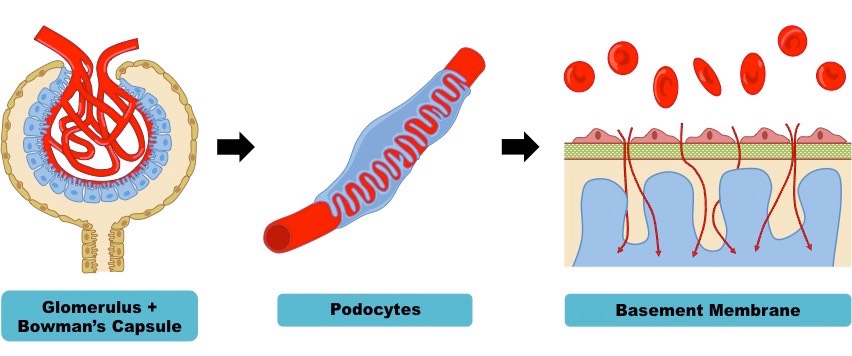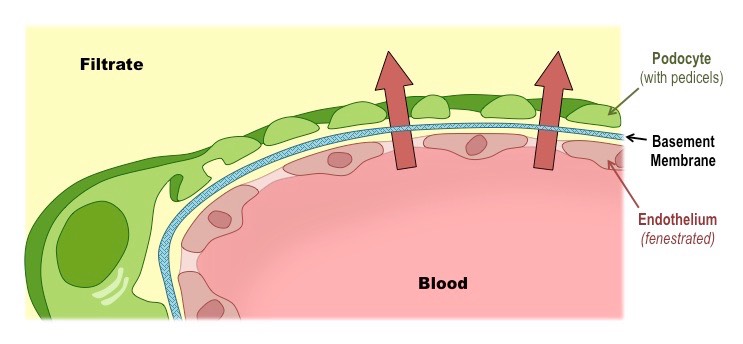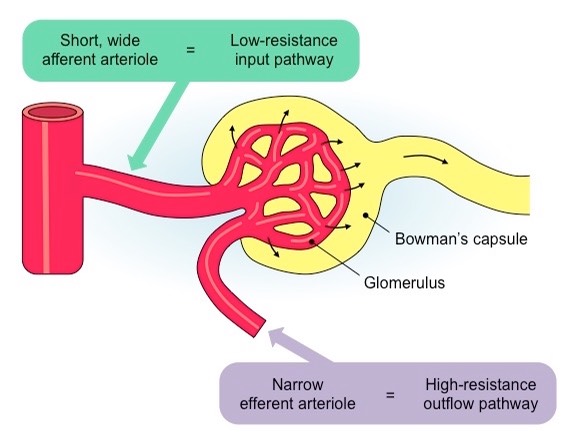![]()
Understanding:
• The ultrastructure of the glomerulus and Bowman’s capsule facilitate ultrafiltration
Ultrafiltration is the first of three processes by which metabolic wastes are separated from the blood and urine is formed
- It is the non-specific filtration of the blood under high pressure and occurs in the Bowman’s capsule of the nephron
Structure of the Bowman’s Capsule
- As the blood moves into the kidney via afferent arterioles it enters a knot-like capillary tuft called a glomerulus
- This glomerulus is encapsulated by the Bowman’s capsule, which is comprised of an inner surface of cells called podocytes
- Podocytes have cellular extensions called pedicels that wrap around the blood vessels of the glomerulus
- Between the podocytes and the glomerulus is a glycoprotein matrix called the basement membrane that filters the blood

Basement Membrane
Blood is filtered by a mesh called the basement membrane, which lies between the glomerulus and Bowman’s capsule
- Glomerular blood vessels are fenestrated (have pores) which means blood can freely exit the glomerulus
- The podocytes of the Bowman’s capsule have gaps between their pedicels, allowing for fluid to move freely into the nephron
- Consequently, the basement membrane functions as the sole filtration barrier within the nephron
The basement membrane is size-selective and restricts the passage of blood cells and large proteins
- Hence when the blood is filtered, the filtrate formed does not contain any blood cells, platelets or plasma proteins

Hydrostatic Pressure
Ultrafiltration involves blood being forced at high pressure against the basement membrane, optimising filtration
- This high hydrostatic pressure is created in the glomerulus by having a wide afferent arteriole and a narrow efferent arteriole
- This means it is easy for blood to enter the glomerulus, but difficult for it to exit – increasing pressure within the glomerulus
- Additionally, the glomerulus forms extensive narrow branches, which increases the surface area available for filtration
- The net pressure gradient within the glomerulus forces blood to move into the capsule space (forming filtrate)

